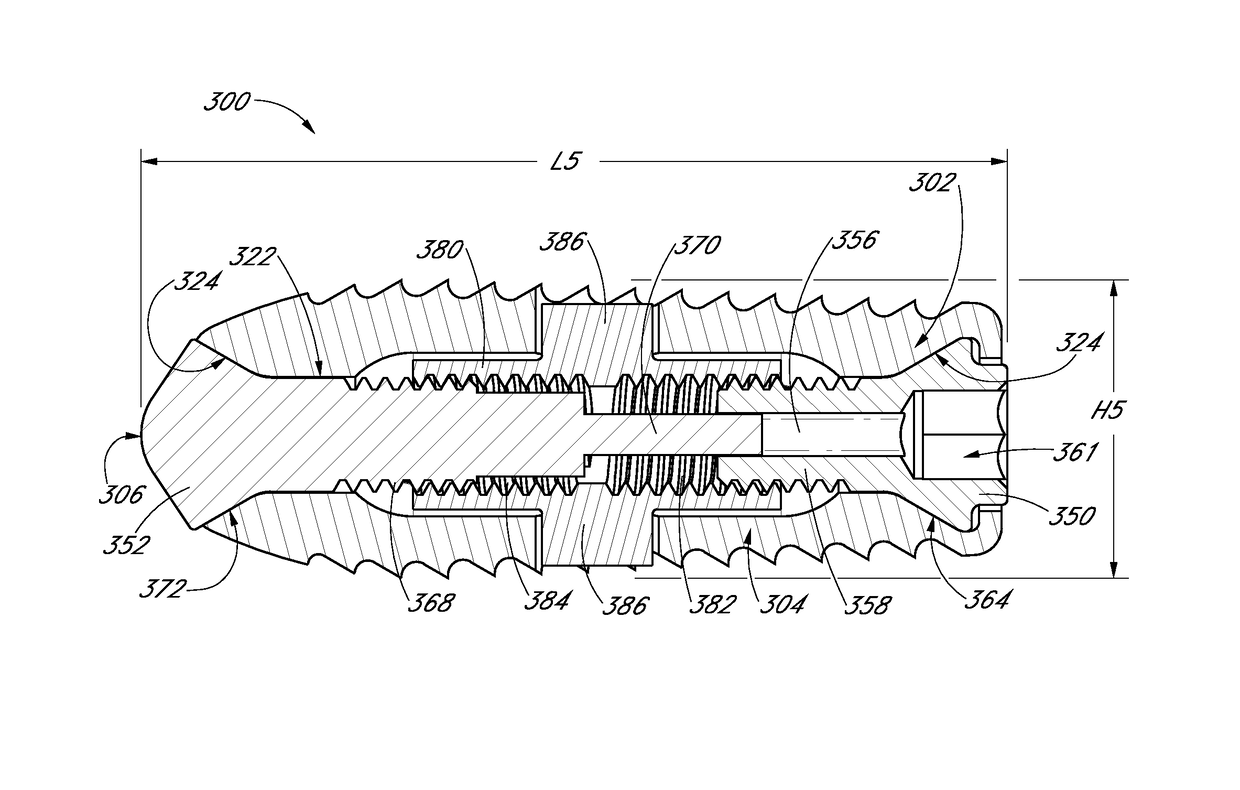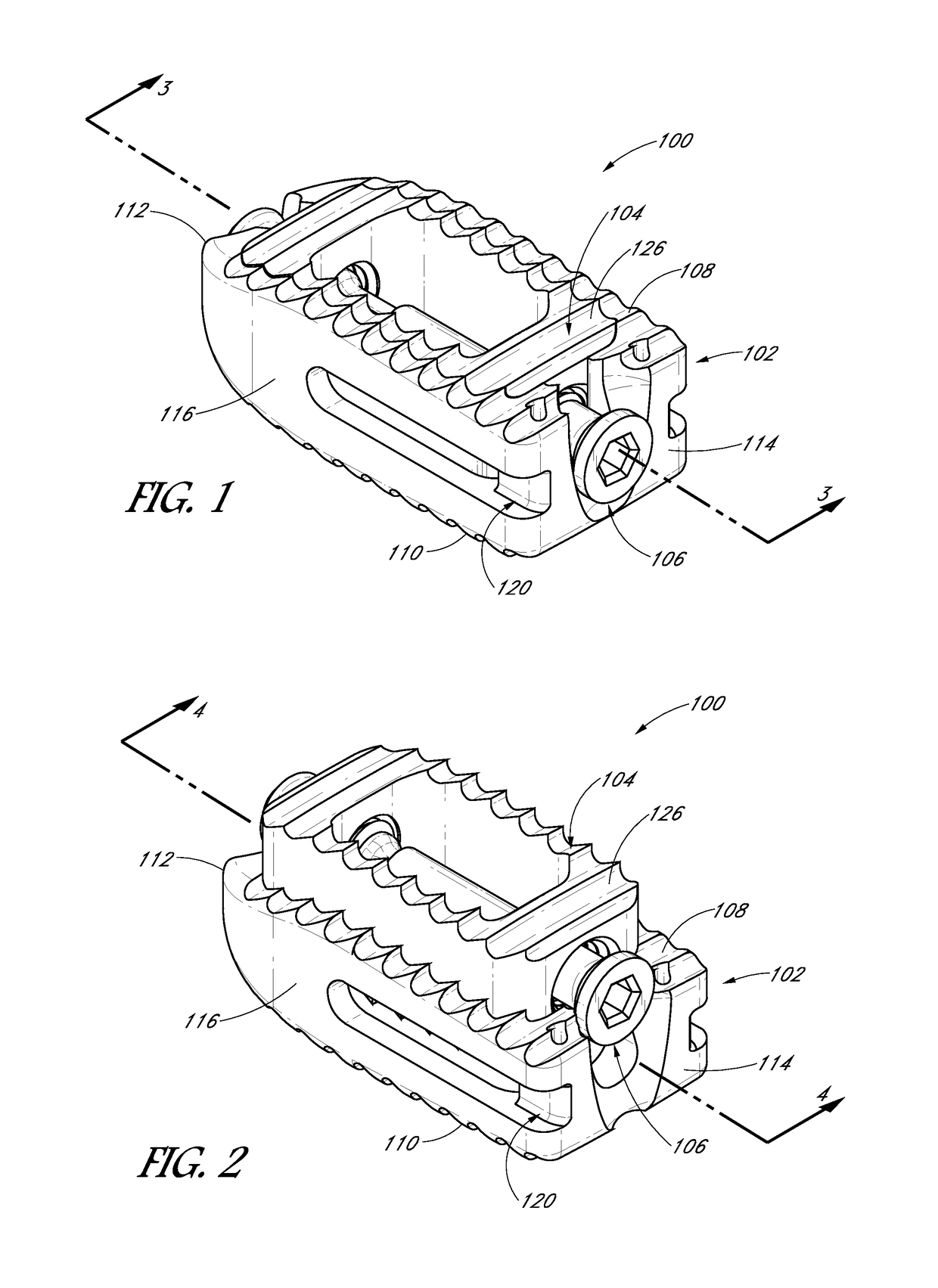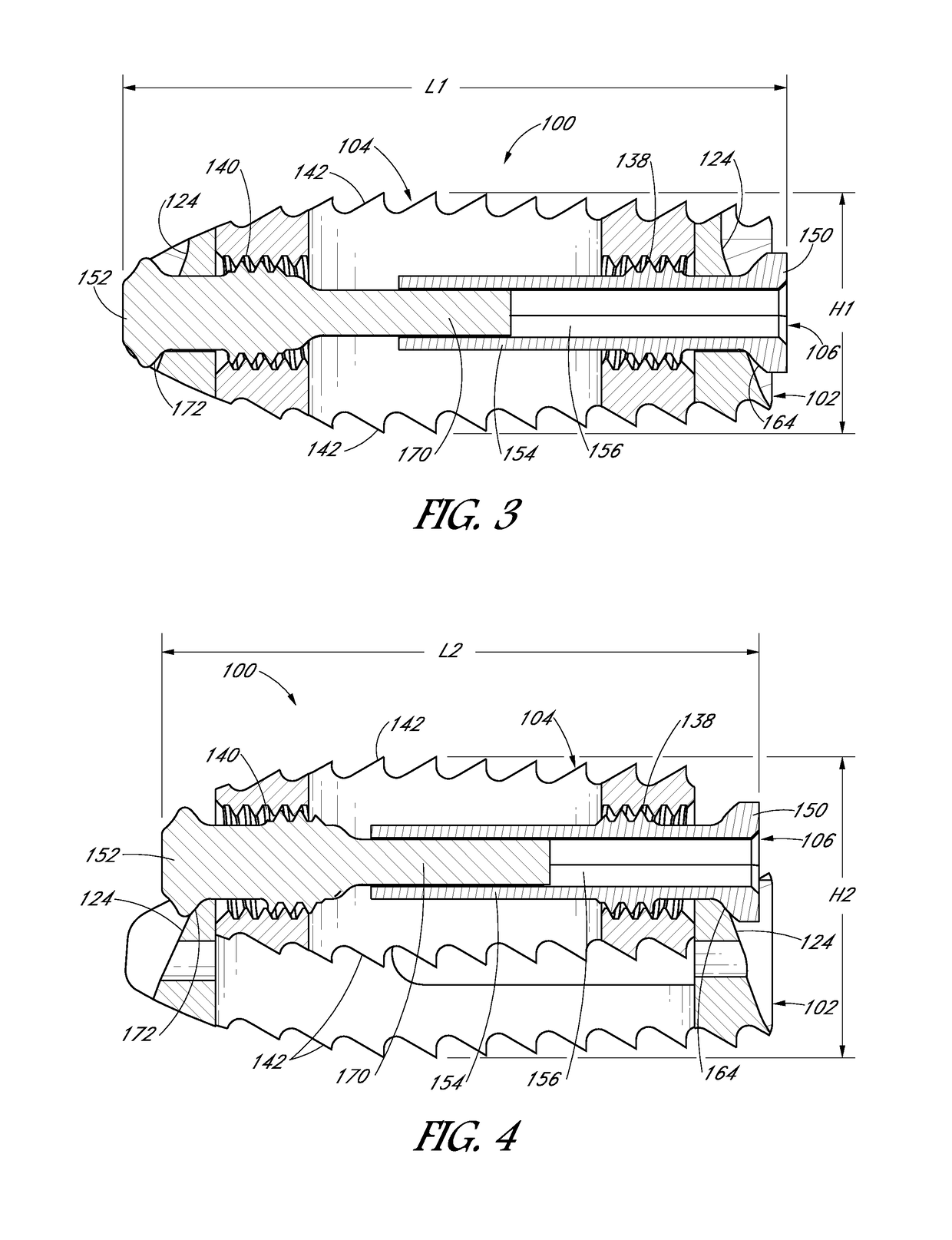Expandable interbody device
a technology of interbody device and expandable spine, which is applied in the field of expandable spine implants, can solve the problems of nerve compression, spinal structure damage, imbalance and tilt of vertebrae, and pain, and achieve the effect of less disruption of soft and boney tissu
- Summary
- Abstract
- Description
- Claims
- Application Information
AI Technical Summary
Benefits of technology
Problems solved by technology
Method used
Image
Examples
Embodiment Construction
[0077]An expandable interbody device can be configured to have an initial collapsed configuration having a first height suitable for being inserted into an intervertebral space between a pair of adjacent vertebrae, and an expanded configuration having a second height that is greater than the first height. The implant can be expanded from the initial collapsed configuration to the expanded configuration in-situ. The use of a small interbody implant which may be expanded in-situ allows the possibility of performing the surgery percutaneously with minimal disruption to tissues surrounding the surgical site and intervening soft tissue structures, through a minimally invasive or open procedure. The expandable interbody device of the present disclosure can include features that reduce displacement of soft tissue and structures during placement of the expandable interbody device while providing support after placement to the adjacent vertebrae while bone fusion occurs. The expandable inter...
PUM
| Property | Measurement | Unit |
|---|---|---|
| length | aaaaa | aaaaa |
| distance | aaaaa | aaaaa |
| height | aaaaa | aaaaa |
Abstract
Description
Claims
Application Information
 Login to View More
Login to View More - R&D
- Intellectual Property
- Life Sciences
- Materials
- Tech Scout
- Unparalleled Data Quality
- Higher Quality Content
- 60% Fewer Hallucinations
Browse by: Latest US Patents, China's latest patents, Technical Efficacy Thesaurus, Application Domain, Technology Topic, Popular Technical Reports.
© 2025 PatSnap. All rights reserved.Legal|Privacy policy|Modern Slavery Act Transparency Statement|Sitemap|About US| Contact US: help@patsnap.com



